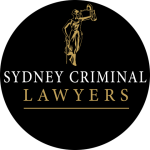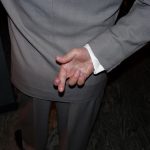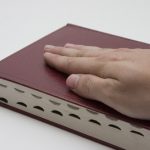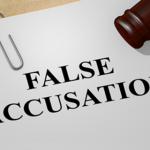Public Justice Offences: Protecting the Integrity of the Criminal Justice System

Federal prosecutors in the United States recently accused president Donald Trump’s former campaign manager, Paul Manafort, of tampering with potential witnesses whilst on bail.
Prosecutors directed by special counsel, Robert Muller, allege Mr Manafort and an associate repeatedly attempted to contact a witness via telephone and encrypted messaging.
They allege in court documents that Manafort “contacted and attempted to contact” two unnamed witnesses “in an effort to influence their testimony and to otherwise conceal evidence”.
One of the witnesses allegedly formed the view that Manafort’s calls were part of an effort to induce the witness to lie under oath.
The incident has triggered debate about public justice offences, and the impact of such crimes on perceptions about the integrity of the criminal justice system and the lengths politicians will go to avoid prosecution.
In New South Wales
Public justice offences are meant to be treated seriously in New South Wales.
Part 7 of the Crimes Act 1900 (NSW) (‘the Act’) contains offences which criminalise justice offences such as perjury, false accusations, concealing crimes, influencing those involved in the criminal justice system, and otherwise attempting to pervert the course of justice.
Divisions 2 and 3 of that Part deal with interfering with the administration of justice, including making false accusations, hindering, concealing and attempting to influence witnesses, judges and jurors.
Making false accusations
Section 314 of the Act makes it an offence punishable by up to seven years’ imprisonment for a person to make an accusation intending to subject another person to an investigation for an offence, knowing the other person is innocent.
For a person to be found guilty, the prosecution must prove each of the following elements beyond reasonable doubt:
- The defendant made an accusation against another person,
- The accusation was made with the intention of having another person investigated for an offence,
- The accusation was in fact false, and
- The defendant knew the other person was innocent.
Hindering investigations
Section 315 prescribes the same seven year maximum prison sentence for a person who does anything with the intent to hinder any of the following in respect of a serious indictable offence committed by another person:
- Its investigation,
- The discovery of evidence, or
- The apprehension of the offender.
A serious indictable offence is one which carries a maximum penalty at least five years’ imprisonment.
It is not an offence under the section to refuse or fail to divulge information or produce evidence.
Interfering with witnesses or victims
Section 315A makes it an offence punishable by up to seven years behind bars to threaten someone with injury or detriment, or to actually cause it, intending to influence the other person not to bring material information about an indictable offence to the attention of police or another appropriate authority
An indictable offence is one which can be tried in a higher court, such as the District Court. It typically attracts a maximum prison sentence of more than two years.
‘Material information’ is defined as that which might lead to the arrest of a person, or their prosecution or conviction.
Concealing offences
Section 316(1) prescribes a maximum penalty of two years’ imprisonment for anyone who conceals a serious indictable offence which, again, is an offence that attracts a maximum of at least five years in prison.
The section requires that a person who knows or believes such an offence has been committed by another and has information which might material assist in securing an arrest or conviction, or causing the other person’s prosecution, must bring that information to the attention of police or other appropriate authority.
Under section 316(2), the maximum penalty for a person who solicits, accepts or agrees to accept a benefit for themselves or another person for an act of concealment is liable to a maximum penalty of five years in prison.
Some professions, vocations and callings are excluded from prosecution, including doctors, lawyers and priests, provided the information is obtained in the course of practise.
Tampering with evidence
Section 317 makes it a crime punishable by up to 10 years’ imprisonment for a person to intentionally misleading any court or tribunal by:
- Suppressing, concealing, destroying, altering or falsifying anything that is or may be required as evidence,
- Fabricating false evidence (other than by perjury), or
- Knowingly making use of fabricated evidence.
Making or using false instruments
Section 318 imposes a 14 year maximum penalty on a person who makes or uses a false official instrument, or a copy of one knowing it is false, intending to induce another person to accept it as genuine in circumstances where the acceptance will pervert the course of justice.
An ‘official instrument’ is any issued by a person in their capacity as a public or judicial officer.
‘Perverting the course of justice’ is defined by section 312 as obstructing, preventing, perverting or defeating the course of justice or the administration of the law.
Perverting the course of justice
The maximum penalty for doing any act, or making any omission, with intent to pervert the course of justice is 14 years in prison, under section 319 of the Act.
Corruption of witnesses or jurors
Section 321(1) makes in an offence for a person to offer, attempt to offer or actually confer or procure a benefit on or for any person with the intent to influence a witness to withhold evidence or give false evidence, or not attend court or withhold evidence.
The same subsection makes it a crime to influence the conduct of a juror with the intent to pervert the course of justice.
The maximum penalty in either case is 10 years’ in prison.
Section 321(2) prescribes the same maximum penalty for anyone who solicits, accepts or agrees to accept any benefit (ie a bribe) for giving false evidence, withholding true evidence, not attending as a witness or failing to produce evidence as required by a subpoena for summons.
The same subsection makes it an offence punishable by the same penalty to take such a bribe intending to pervert the course of justice.
Under section 324, the maximum penalty increases to 14 years’ imprisonment where any offence under section 321 involves an intention to procure the conviction or acquittal of a defendant charged with a serious indictable offence.
Threatening or intimidating witnesses, jurors or judges
Section 322 makes it an offence punishable by a 10 year maximum sentence to threaten or actually cause any injury or detriment intending to influence:
- A witness to give false evidence, withhold evidence, not attend court or not produce evidence pursuant to a subpoena or summons,
- A juror’s conduct in their capacity as a juror, or not to attend court, or
- A judicial officer’s conduct in their capacity as such.
The maximum penalty increases to 14 years where the offence involves an intention to procure the conviction or acquittal of a defendant charged with a serious indictable offence.
Influencing witnesses or jurors
Section 323 prescribes a seven year maximum prison sentence for anyone who intends to procure, persuade, induce or otherwise cause a witness to give false evidence, withhold evidence, not attend court, not produce evidence pursuant to a summons or subpoena, or to influence a person’s conduct as a juror, whether that juror has been sworn or not.
Again, under section 324 the maximum increases to 14 years where the offence involves an intention to procure the conviction or acquittal of a defendant charged with a serious indictable offence.
Preventing witnesses or jurors from attending court
Section 325 contains a general offence of preventing, obstructing or dissuading witnesses or jurors from attending court or producing materials pursuant to a court order, such as a subpoena or summons.
It provides that any person who does this is guilty of an offence punishable by up to five years behind bars.
The offence does not require the prosecution to prove the element of intent.
Reprisals against witnesses, jurors and judges
Section 326 sets down a 10 year maximum prison sentence for anyone who threatens or causes injury or detriment to a public justice official, witness, juror or judge, or someone they believe holds or held one of those positions, due to their capacity as such or their involvement in judicial proceedings.
While public justice offences are treated very seriously by the courts, it is important to bear in mind that prosecutor are required to prove every element (or ingredient) of the offence beyond a reasonable doubt before a person can be found guilty.
If you are charged with a public justice offence, it is a good idea to contact an experienced criminal defence lawyer to advise you of your options and the best way forward.






